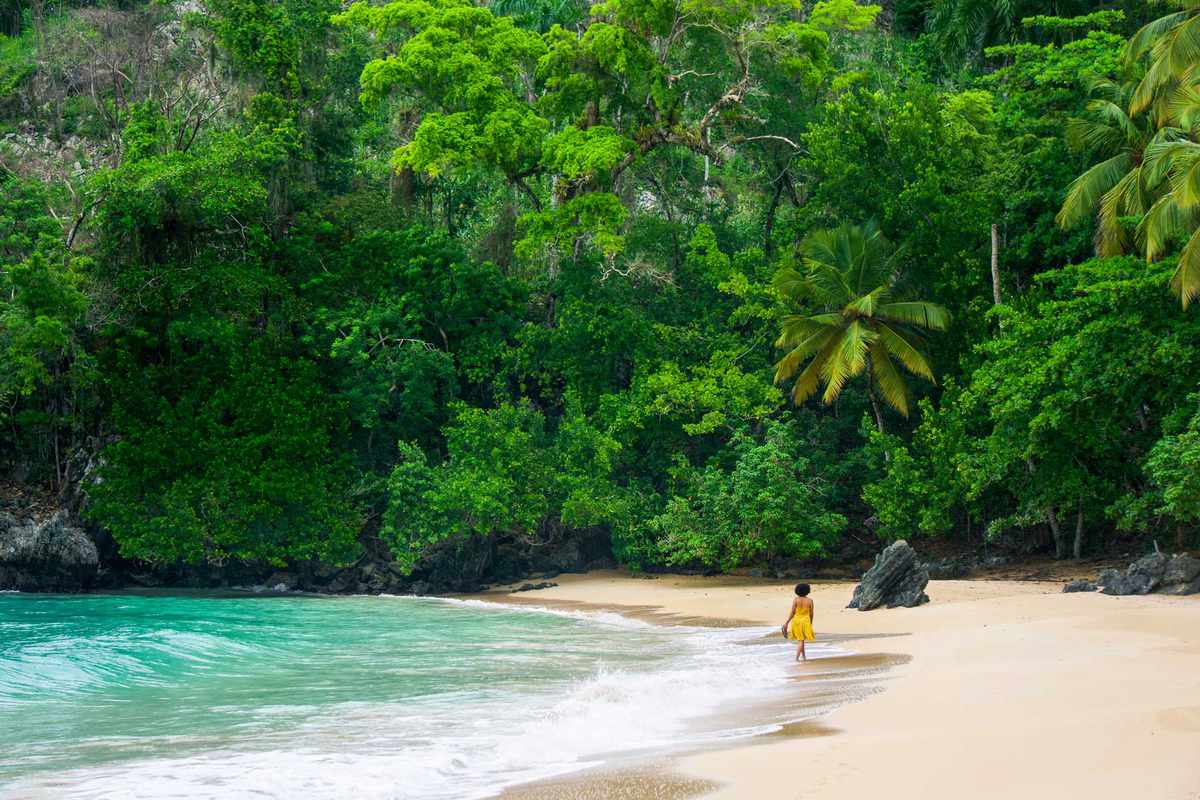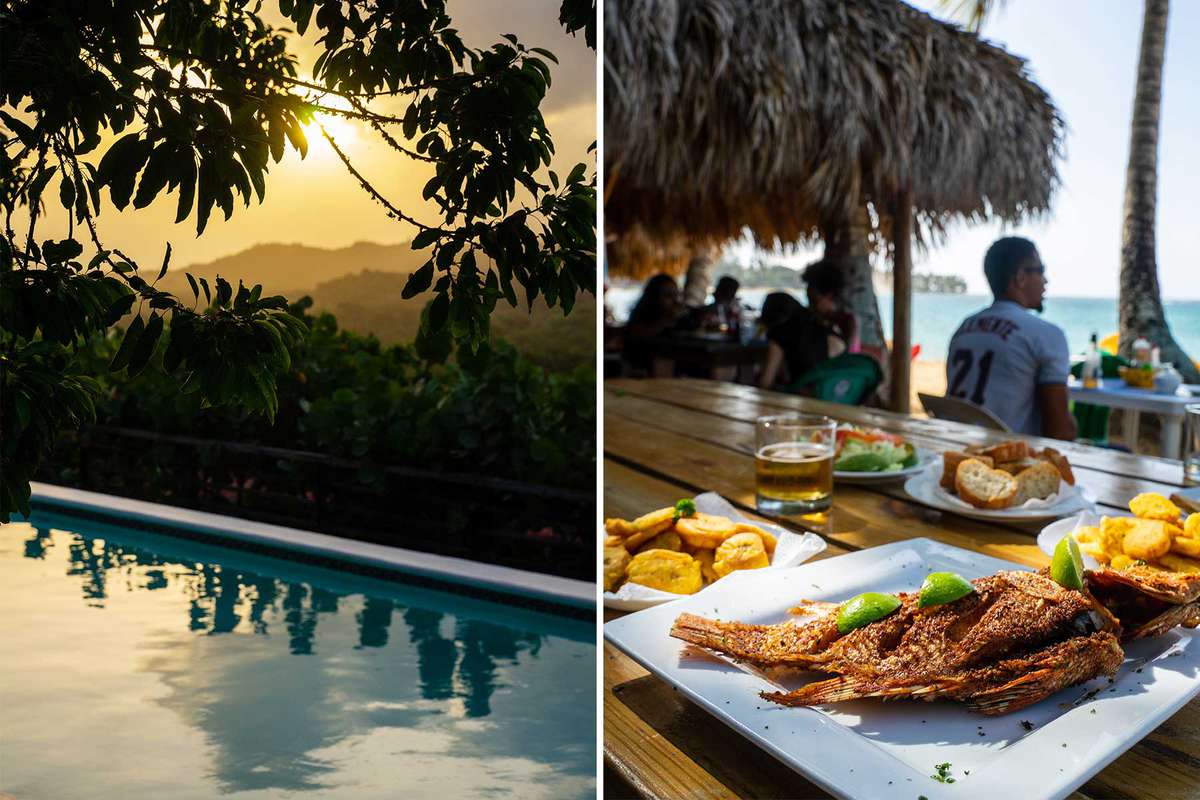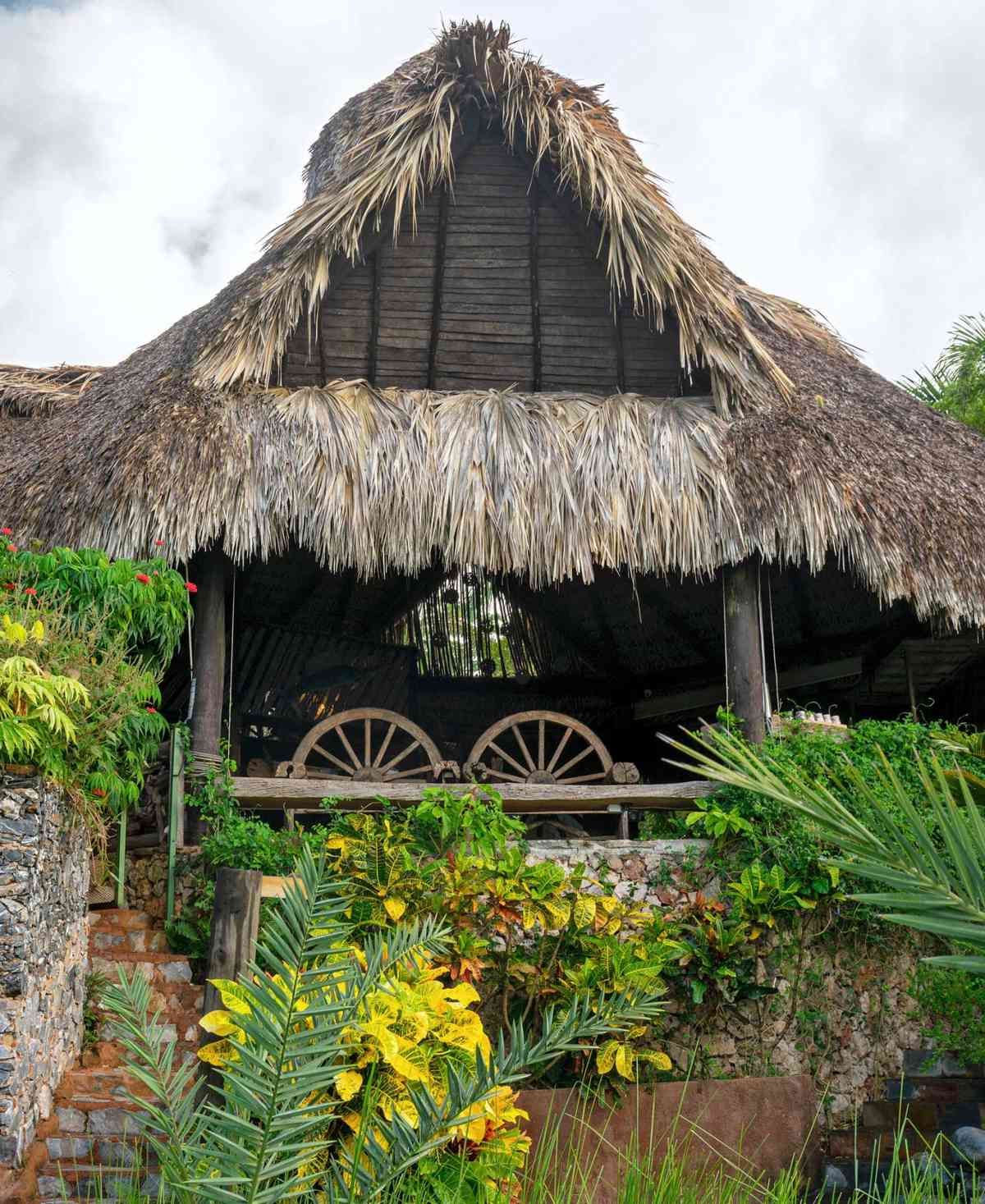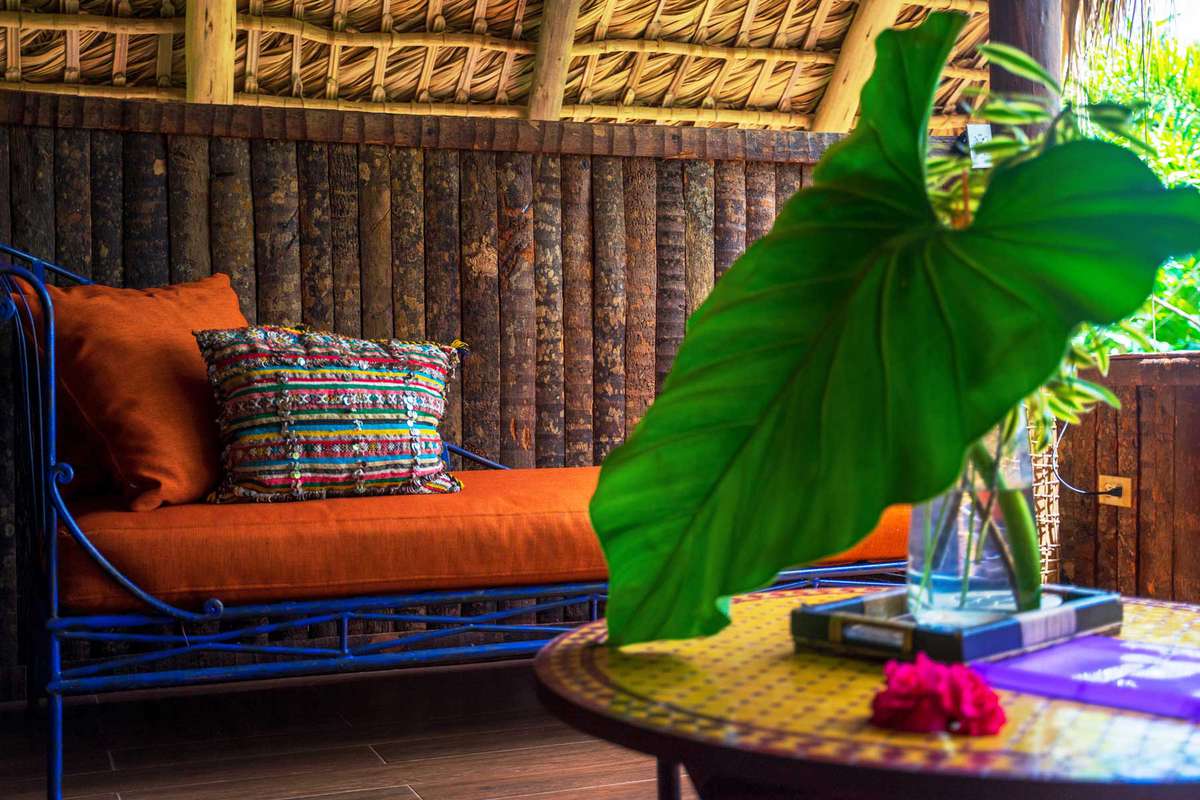Monthly Archives: December 2020
On the Wild Side

The Dominican Republic’s ‘Wild Side’ Offers a Quieter Alternative to Punta Cana
On the Samaná Peninsula, innovative eco-lodges are highlighting the region’s untamed natural bounty. Here’s how to take a swing around one of the country’s less-traveled corners.By Lebawit Lily Girma November 29, 2020
“It’s surprising that in a country so commercialized, you can still find places like this,” Noemi Araujo said as we passed a For Sale sign on a fenced, wooded lot. The owner of Clave Verde Ecolodge, where my partner, Luis, and I were staying, was also our guide for the two-hour hike down the uneven road that begins near the hotel and leads to the stunning shoreline at Playa Morón. Cicadas buzzed in the thick tropical forest around us, piercing the humid afternoon air. Seconds later, she told us to look up: speckled brown palmchats, the national bird of the Dominican Republic, were flying in and out of their three-story nest at the tip of a royal palm.
Over the past 15 years, I’ve explored more than 20 islands in the Caribbean, but no place grabs me quite like the over-the-top tropical splendor of the Samaná Peninsula: scenic coves, craggy cliffs, seemingly endless coconut groves, just 100 miles from my home in Santo Domingo, where I’ve lived since 2016. Humpback whales visit Samaná every January to mate and calve. The area’s beachside resort towns — Las Terrenas and Las Galeras — are popular escapes from the capital, both for locals like Luis and me and for travelers in search of a quieter alternative to Punta Cana.
But the hills and valleys of the peninsula’s interior were harder to get to know — until now. Dominican-owned eco-lodges are opening up in these rural communities, honoring nature with their use of locally sourced materials, guided excursions into the biodiverse forest, and meals sourced from their own permaculture gardens. In a time when we all want to be away from the crowds — and the Caribbean starts to reopen borders — this part of Samaná is a welcome break.
One of the pioneers is the campesino-chic Clave Verde, where Luis and I stayed on a weekend trip this fall. Araujo and her husband, Jonathan, founded the solar-powered property after relocating from Santo Domingo to the mountain village of La Barbacoa. The lodge, surrounded by forest trails and groves of native trees like almond, cherry, and acacia, is just a 15-minute drive from Las Terrenas, where Araujo suggested lunch after our beach hike.

From left: The pool at Clave Verde Ecolodge, with the Sierra de Samaná beyond; lunch of fried capitán and tostones at Candelita, in the beach town of Las Terrenas. | CREDIT: LEBAWIT LILY GIRMA

The five-bedroom villa at Casa El Paraíso. | CREDIT: LEBAWIT LILY GIRMA
We came to the end of Samaná’s sole highway, and views of the ocean disappeared as we turned off at the sign for the village of La Guázuma. Walking into the seven-key Casa El Paraíso, we were plunged into a kind of miniature nature reserve, with fruit trees, palms, and purple Mexican petunias framing a narrow stone path. Butterflies circled my legs, and cicadas echoed off the timber walls. We reached an open-air lounge with sculptures and Balinese-style wooden furniture set against the panorama of Samaná Bay.
José Raúl Nova — a respected Santo Domingo veterinarian who tended to the pets of the late Oscar de la Renta — initially built the property as a vacation home. Nova showed us around the botanical paradise, which he and his wife, Nora Mejía, transformed into an eco-hotel two years ago. Its high-ceilinged thatched bungalows were inspired by the owners’ travels: the nautical Marina, where de la Renta once stayed; Casita Dominicana, with furniture made of repurposed wood; Marruecos, their newest addition, full of custom-made Moroccan textiles and ceramics. All are open on one side, with wide views of the bay acting as a fourth wall. “There are no room keys,” Nova told us. “Nature herself makes you feel protected here.”
We ordered our dinner to the sandy poolside lounge, where chef Mirko Casagrande arrived with a lionfish tartare. “We want to show that the DR has a different side,” he said, joining our conversation. “A rich natural side, with rivers, beaches, and mountains.” Casagrande hails from Milan, but settled in Las Galeras 20 years ago. His passion for the country shines in his cooking: grilled lobster with farro, avocado, and mango; octopus with honey and ginger; grilled vegetables from the garden, where free-range chickens wander among pumpkins, plantains, and cassava. “My kitchen is one hundred percent sustainable,” explained the chef, who decided to serve the invasive — and highly destructive — lionfish once lobster season ended. “For me, serving lionfish is an honor, because I’m doing good for the environment.”

The Marruecos bungalow at Casa El Paraíso. | CREDIT: LEBAWIT LILY GIRMA
After morning thunderstorms canceled our plans to hike the seven-beach trail, Luis and I opted for a drive to Aventura Rincón Ecolodge, winding past overgrown, palm-dotted fields and pastel shacks. This innovative solar-powered property and organic farm looks like a rambling garden, with five cabins inspired by Dominican campo life.
“We promote going back to your roots,” said Orquídea Susana, who at the time was overseeing the property’s permaculture initiatives. That means heirloom seeds, organic methods, and cooking what’s seasonal. She showed us vanilla, turmeric, cacao, taro, and papaya. “We have local varieties of fruit, like piña pan de azúcar,” Susana told us. “It tastes like sugar.” Thunder forced us to pick up our pace, though I was tempted to linger among the tall shoots of cranberry hibiscus.
Our colorful lunch spread included snapdragon tea and a salad of fresh-picked mizuna, avocado, and hibiscus, garnished with edible flowers. For dessert: slices of the local sweet pineapple and jalao, a baked coconut candy. As we walked it all off at nearby Playa Colorada, we didn’t see a soul.
This story first appeared in the December 2020 issue of Travel + Leisure under the headline “On the Wild Side.”
